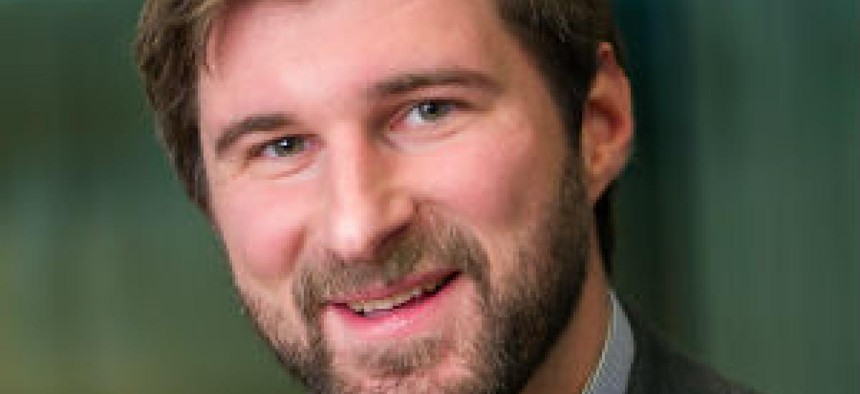Do you talk innovation or do you do innovation?

Everyone talks about being innovative, but do you know what it takes to live up to that label? Agilex director of technology innovation Mark Bittmann explores how to overcome the challenges to being innovative in today's government market.
Most contracting leaders would tell you that innovation is a priority for their business, but is anyone actually managing it successfully?
I recently attended the Chief Innovation Officer (CINO) Summit in New York City to learn how contractors might become more “innovative.”
John Levis, Deloitte’s global chief innovation officer, opened the conference by saying that innovation is easy to say but hard to define. A diverse audience spanning a number of industries, including airlines, banks, hotel chains, an NBA team, a chocolate company, professional service providers and yes, federal and local governments, nodded in agreement.
We say the word a lot – I use it 16 times in this article – but can we agree on what it means?
After two days of panels and coffee break conversations, I found that those various industries define and approach innovation in a number of different ways. Their methodologies varied from the clinical to the creative with definitions ranging from complex consultant-speak to just a few simple words.
Even the roles and responsibilities of the CINO differed from organization to organization. For example, some report to the CMO, others to the CTO and several (of course) argued in favor of reporting to the CEO. Some are data driven, some are driven by a vision.
Should all of these different approaches have surprised me? Probably not. Innovation has been around a long time, but the CINO role is relatively young. More importantly, this diversity in approach reflects the unique demands of different markets, culture and business models.
Despite those differences, there were some common themes.
Overall, I would say that successful CINOs focus on enabling and facilitating others. They are managers more than they are innovators. Furthermore, you need a dedicated strategy and support from leadership to succeed long-term.
Luis Solis, author of Innovation Alchemists, offered a great statistic for measuring return on innovation: Hours of CEO time dedicated to the innovation program!
The CINO must perform a balancing act – you cannot become detached from core enterprise challenges, but you must also be free to pursue lines of thinking that run contrary to the existing strategy. This mix of isolation and collaboration creates tension, but it is also critical to fostering breakthroughs. The CINO requires trust and confidence from the lines of business to succeed, with innovation treated as a core function, much like marketing, finance or IT.
Another challenge for innovation programs is their often long-term and uncertain payback horizon. According to several presenters, three-to-five years is a good baseline. This makes them a tempting target for cost cutting in challenging times, which can eliminate all of the gains to date.
In applying these lessons to a government services provider, we face one overriding challenge. Most of these other organizations provide specific products or at a minimum, highly regimented services. As a government service provider, our product is our people, knowledge and processes.
It is tempting to think, “we are different, and that makes it harder.” Fortunately, one of the most pervasive messages from the conference was that innovation requires an understanding of your customer, or more specifically your customer’s problems.
Innovation doesn’t happen in a remote lab. It has to happen every day as we introduce new technologies and techniques into the government mission. We shouldn’t attempt to solve every problem. Rather, we have to be very good at solving a specific set of mission and technology challenges. When we go deep in this fashion, we create the perfect environment for critical innovations.
An innovation process has to be centered on securing customer insight, and using our leadership in emerging technologies to transform this knowledge into groundbreaking solutions. It can lead to significant innovations in how the government develops higher quality software, applies algorithms to make our country safer, and uses mobile devices to make our country healthier.
I can’t say whether it is easier or harder to be innovative in our market versus others. What is clear is that the opportunity to solve hard information problems that advance the safety, health and quality of life of Americans brings out the best thinking of some of the most innovative people I know.
NEXT STORY: 20 BD habits to kill off in 2015